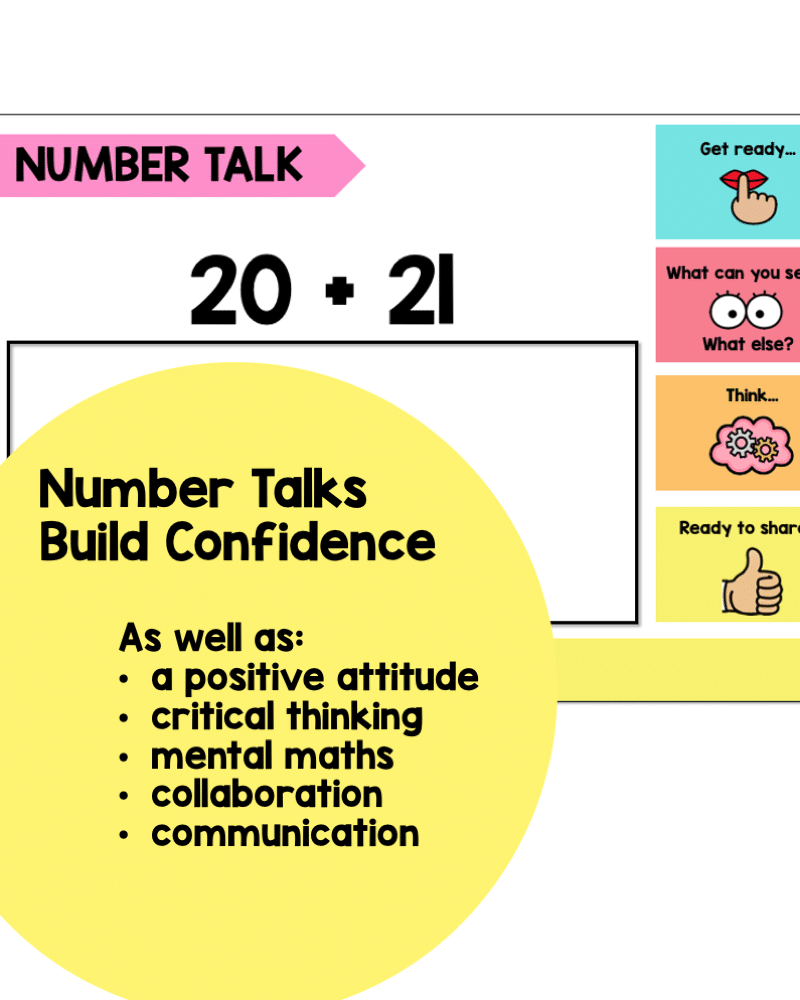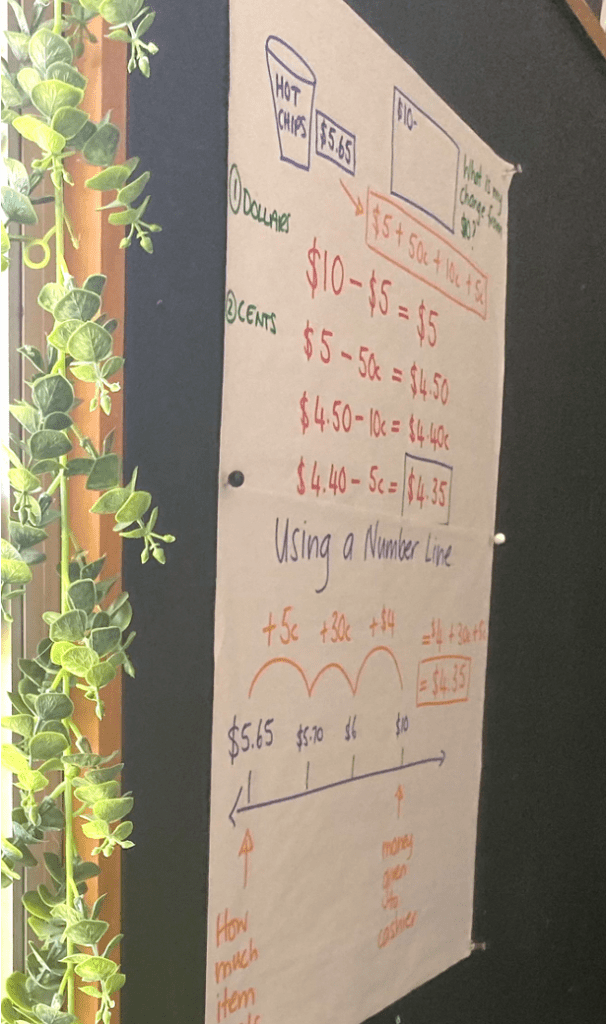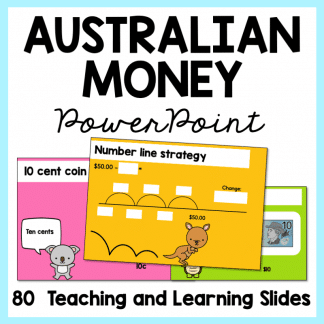
Mathematics is often viewed as one of the most challenging subjects in school. However, it’s also one of the most fundamental skills students need to succeed in various aspects of life. To truly master mathematics, students must adopt a consistent and structured approach. One highly effective strategy is the practice of daily maths review. In this blog post, we will explore the many benefits of incorporating daily maths review into a student’s routine.
1. Reinforcement of Key Concepts
Daily maths review provides a continuous opportunity for students to reinforce essential mathematics concepts. When students revisit topics regularly, they are more likely to retain information and develop a deeper understanding of mathematical principles. This consistent reinforcement ensures that previously learned concepts become second nature, making it easier to grasp more advanced topics.
2. Improved Retention and Long-Term Learning
Studies have shown that frequent exposure to information leads to improved retention and long-term learning. When students engage in daily maths review, they strengthen their memory and enhance their ability to recall information. This is especially important when it comes to mathematics, as each new concept builds upon the foundation of previously learned material.
3. Increased Problem-Solving Skills
Mathematics is not just about memorising formulas and procedures; it’s also about developing critical problem-solving skills. Daily maths review encourages students to tackle a variety of math problems regularly, helping them become more proficient in problem-solving techniques. Over time, this leads to increased confidence in their ability to approach and solve math challenges.
4. Reduced Test Anxiety
One of the leading causes of test anxiety is the fear of forgetting important concepts or formulas during an exam. Daily maths review significantly reduces this anxiety by ensuring that students have a firm grasp of the material. When students are confident in their knowledge and skills, they are more likely to perform well on tests and assessments.
5. Time Management and Consistency
Establishing a daily maths review routine also helps students develop crucial life skills such as time management and consistency. By setting aside a specific time each day to review math concepts, students learn to manage their time effectively and establish productive habits that can benefit them in various areas of their lives.
6. Adaptability to Changing Curriculum
The curriculum in schools can change, and students may encounter new topics or teaching methods. Daily maths review equips students with the ability to adapt to these changes more easily. They become flexible learners who can quickly grasp new concepts and integrate them into their existing knowledge base.
7. Confidence Boost
Finally, daily maths review provides a significant confidence boost. As students see consistent improvement in their math skills, they gain confidence not only in mathematics but also in their overall academic abilities. This newfound confidence can have a positive ripple effect on their performance in other subjects as well.
In conclusion, daily maths review is a powerful tool that can transform a student’s mathematical journey. By reinforcing key concepts, improving retention, enhancing problem-solving skills, reducing test anxiety, and instilling important life skills, it sets the stage for academic success. Students who make daily maths review a part of their routine are better equipped to excel in math and beyond, unlocking a world of opportunities for themselves. So, why wait? Start your daily maths review today and reap the benefits of this invaluable practice.
Try our Daily Maths Review Slides…
-
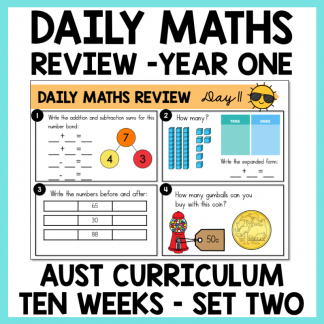 Year 1 Daily Maths Review Slides – Australian Curriculum 10 Weeks – SET 2
Year 1 Daily Maths Review Slides – Australian Curriculum 10 Weeks – SET 2 -
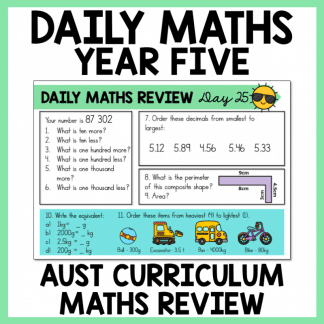 Year 5 Daily Maths Review Set Two
Year 5 Daily Maths Review Set Two -
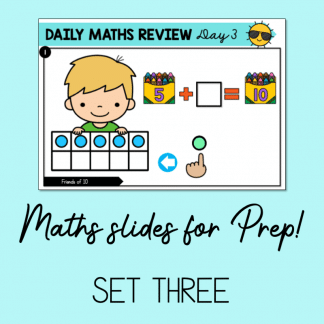 Daily Maths Slides for Prep – Set 3
Daily Maths Slides for Prep – Set 3 -
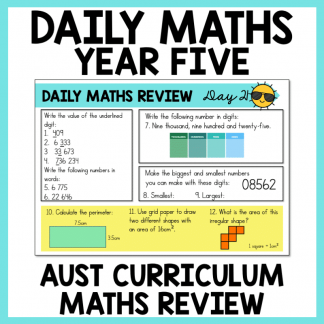 Year 5 Daily Maths Review Set One
Year 5 Daily Maths Review Set One -
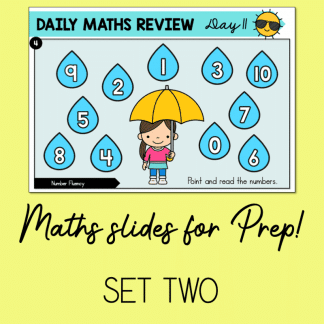 Daily Maths Slides for Prep – Set 2
Daily Maths Slides for Prep – Set 2 -
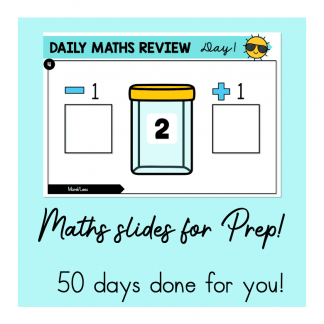 Daily Maths Slides for Prep – Set 1
Daily Maths Slides for Prep – Set 1 -
 Year 3 Daily Maths Review Slides – Australian Curriculum 10 Weeks – SET 2
Year 3 Daily Maths Review Slides – Australian Curriculum 10 Weeks – SET 2 -
 Year 1 Daily Maths Review Slides – Australian Curriculum 10 Weeks – SET 1
Year 1 Daily Maths Review Slides – Australian Curriculum 10 Weeks – SET 1 -
 Year 2 Daily Maths Review Slides – Australian Curriculum 10 Weeks – SET 2
Year 2 Daily Maths Review Slides – Australian Curriculum 10 Weeks – SET 2 -
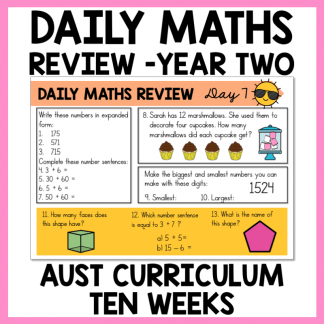 Year 2 Daily Maths Review Slides – Set 4
Year 2 Daily Maths Review Slides – Set 4 -
 Year 3 Daily Maths Review Slides – Australian Curriculum 10 Weeks – SET 4
Year 3 Daily Maths Review Slides – Australian Curriculum 10 Weeks – SET 4 -
 Year 2 Daily Maths Review Slides – Australian Curriculum 10 Weeks – SET 1
Year 2 Daily Maths Review Slides – Australian Curriculum 10 Weeks – SET 1 -
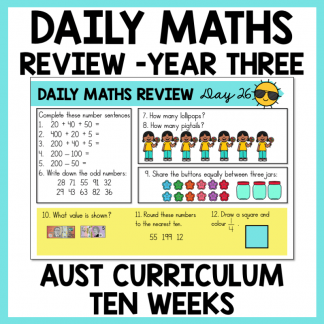 Year 3 Daily Maths Review Slides – Australian Curriculum 10 Weeks – SET 1
Year 3 Daily Maths Review Slides – Australian Curriculum 10 Weeks – SET 1 -
 Year 3 Daily Maths Review Slides – Australian Curriculum BUNDLE
Year 3 Daily Maths Review Slides – Australian Curriculum BUNDLE -
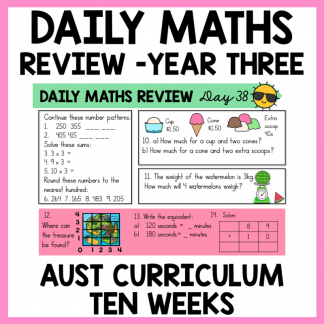 Year 3 Daily Maths Review Slides – Australian Curriculum 10 Weeks – SET 3
Year 3 Daily Maths Review Slides – Australian Curriculum 10 Weeks – SET 3 -
 Year 2 Daily Maths Review Slides – Australian Curriculum Year-Long BUNDLE
Year 2 Daily Maths Review Slides – Australian Curriculum Year-Long BUNDLE -
 Year 2 Daily Maths Review Slides – Australian Curriculum 10 Weeks – SET 3
Year 2 Daily Maths Review Slides – Australian Curriculum 10 Weeks – SET 3 -
 Year 2 Daily Maths Practise Slides – Australian Curriculum – 14 Day Freebie
Year 2 Daily Maths Practise Slides – Australian Curriculum – 14 Day Freebie -
 Year 4 Daily Maths Review Slides – Australian Curriculum 10 Weeks – SET 3
Year 4 Daily Maths Review Slides – Australian Curriculum 10 Weeks – SET 3 -
 Year 4 Daily Maths Review Slides – Australian Curriculum 10 Weeks SET TWO
Year 4 Daily Maths Review Slides – Australian Curriculum 10 Weeks SET TWO

